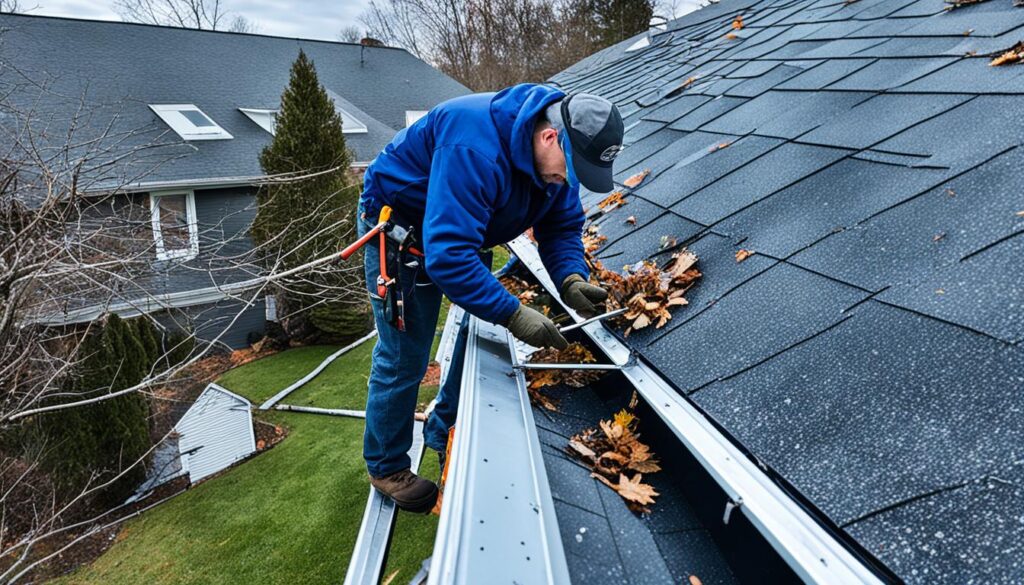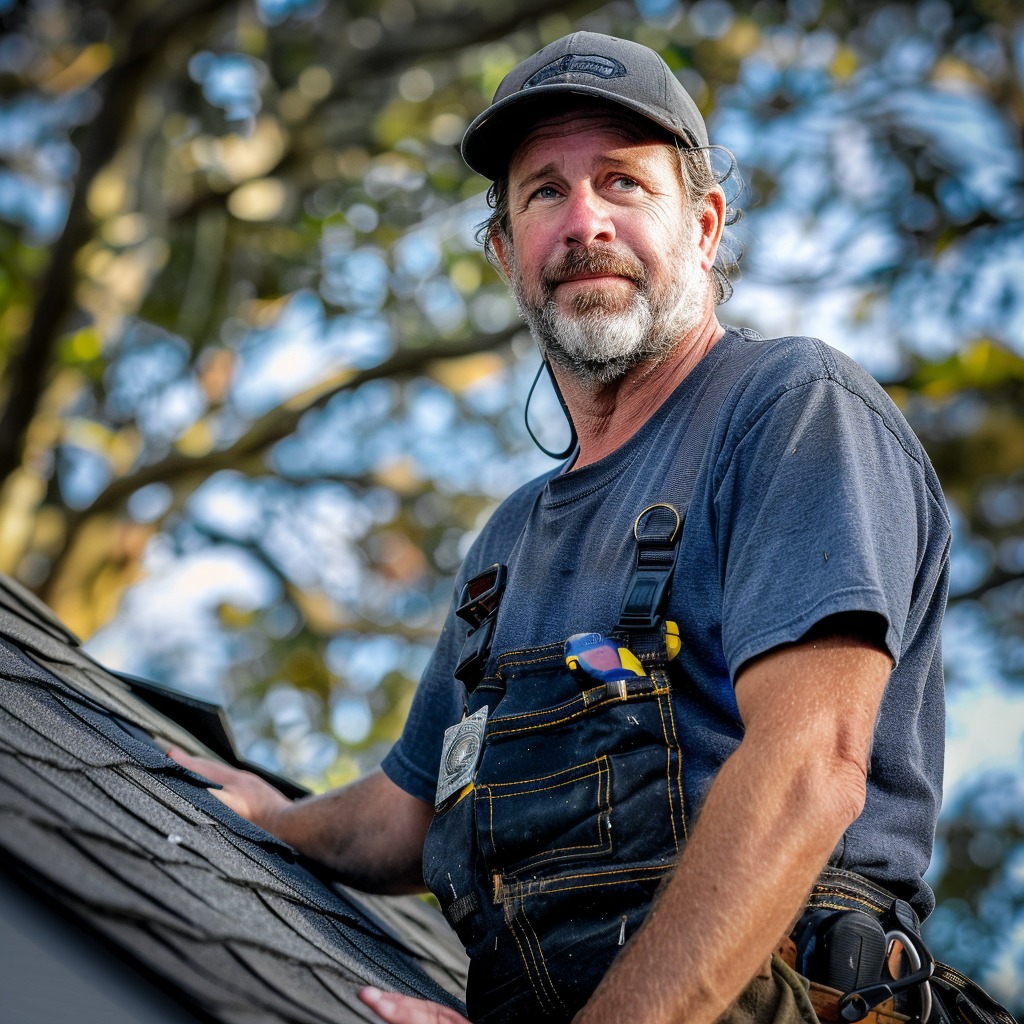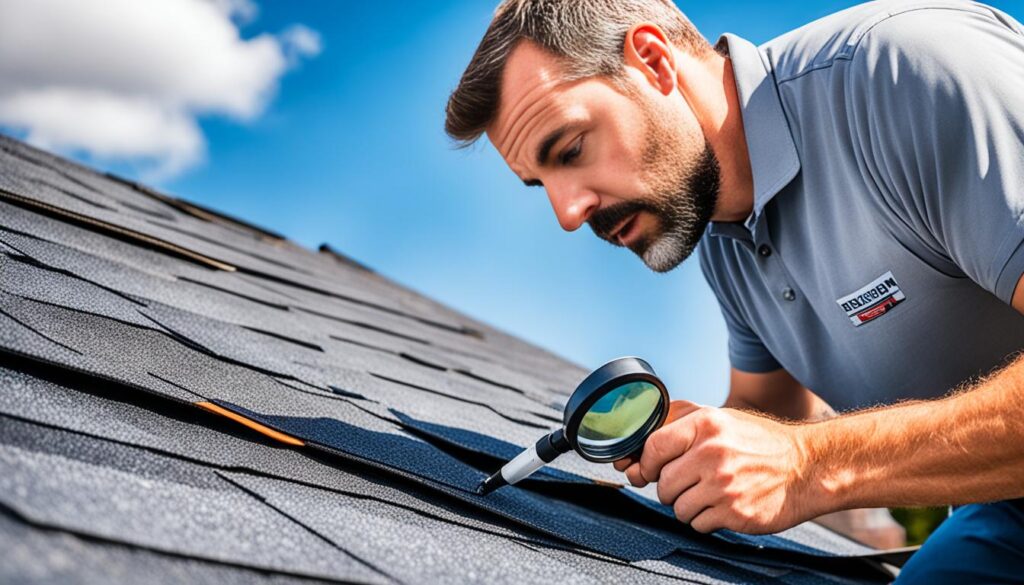As a homeowner, you take pride in maintaining your property. You mow the lawn, paint the walls, and clean the windows regularly. But have you ever thought about the condition of your roof? It’s easy to overlook, but proper roof maintenance is essential for protecting your home and ensuring its longevity.
So, here’s a question for you: Are you giving your roof the attention it deserves?
Your roof is your first line of defense against the elements. It shields you from rain, snow, wind, and sunlight, keeping you safe and comfortable inside your home. But over time, exposure to the elements can take a toll on your roof, leading to leaks, structural damage, and costly repairs.
Fortunately, with a little care and maintenance, you can extend the life of your roof and avoid these problems. In this article, we’ll share essential roof maintenance tips that every homeowner should know. From inspecting shingles to cleaning gutters, we’ll cover everything you need to keep your roof in top condition.
Key Takeaways:
- Regular roof maintenance can prevent costly repairs and premature replacement.
- Thoroughly inspect your shingles each season to identify any signs of wear or damage.
- Treat for moss, lichen, and algae annually to prevent damage and improve the appearance of your roof.
- Clean and maintain your gutters to ensure proper water flow and prevent water damage.
- Remove leaves and debris from your roof regularly to prevent damage and discourage moss growth.
Thoroughly Inspect Shingles Each Season
To maintain the integrity of your roof, it is crucial to conduct a thorough inspection of your shingles every season. Different weather patterns can cause specific issues, so it’s important to be proactive in identifying any wear or damage to your shingles. Neglecting this essential roof maintenance task can lead to more extensive roof damage and potential leaks. By regularly inspecting your shingles, you can detect and address issues early on, preventing costly repairs in the future.
During your shingle inspection, pay close attention to the following key areas:
- Missing Shingles: Look for any shingles that are entirely missing or partially detached from the roof surface. Missing shingles leave your roof vulnerable to water infiltration and can result in rotting or deteriorating roof decking.
- Excessive Wear: Check for signs of excessive wear such as curled, cracked, or blistered shingles. These indicate that your roof may not be adequately protecting your home, and replacement shingles may be necessary.
- Caulk Integrity: Inspect the caulk around the flashing and vent pipes. Cracked or deteriorated caulk can allow water to seep through, causing leaks and potential damage inside your home.
- Moss and Lichen Growth: Be on the lookout for any green or brown patches on your shingles. Moss and lichen growth can indicate decay beneath the shingles, compromising their effectiveness. Promptly address moss and lichen growth to prevent further roof damage.
Timely Shingle Replacement
If you discover any missing shingles or signs of excessive wear during your inspection, it’s important to address these issues promptly. Timely shingle replacement ensures that your roof remains structurally sound and effectively protects your home from the elements. Consult with a professional roofing contractor to assess the extent of the damage and determine the best course of action for shingle replacement.
Regular shingle inspections are an integral part of maintaining a durable and long-lasting roof. By being proactive in identifying roof damage, you can minimize the risk of leaks, structural issues, and costly repairs. Make shingle inspection a seasonal habit to preserve the integrity of your roof and protect your home for years to come.
Treat for Moss, Lichen, and Algae Annually
Moss, lichen, and algae growth on your roof can cause significant damage and shorten its lifespan. To ensure the long-term health of your roof, it is crucial to have it professionally cleaned to remove these growths and prevent their recurrence.
Professional roof cleaning services are equipped with the expertise and specialized equipment to effectively remove moss, lichen, and algae from your roof without causing any damage. They use safe and eco-friendly cleaning solutions that target these growths while preserving the integrity of your roof.
Once your roof has been cleaned, applying preventative products containing zinc and copper can further inhibit the growth of moss, lichen, and algae. Zinc and copper are natural biocides that create an unfavorable environment for these organisms, preventing them from taking root and spreading on your roof.
Regular annual treatment with zinc and copper products will help keep your roof clean and free from these damaging substances. It is a proactive measure that can save you from costly repairs and extend the lifespan of your roof.
The Benefits of Professional Roof Cleaning and Preventative Products:
- Removes moss, lichen, and algae, preventing further damage
- Preserves the integrity of your roof
- Extends the lifespan of your roof
- Prevents the need for costly repairs or replacement
- Maintains the aesthetic appeal of your home
- Improves the overall health and cleanliness of your roof
Investing in professional roof cleaning and preventative products is a wise decision that pays off in the long run. It ensures that your roof remains in excellent condition and protects your home from potential structural issues caused by moss, lichen, and algae growth.
By proactively treating for moss, lichen, and algae annually, you can enjoy a clean and healthy roof that will last for years to come.
| Type of Growth | Damage Caused | Prevention Method |
|---|---|---|
| Moss | Retains moisture, causing shingle degradation | Professional roof cleaning and zinc treatment |
| Lichen | Penetrates and breaks down shingle surface | Professional roof cleaning and copper treatment |
| Algae | Creates black streaks and discoloration | Professional roof cleaning and zinc treatment |
Clean and Maintain the Gutters
Proper gutter maintenance is essential for protecting your roof and home. Regularly cleaning your gutters to remove leaves, sticks, and other debris will ensure proper water flow and prevent clogs. If you live in an area with many trees or frequent storms, it may be necessary to clean your gutters more frequently. Keeping your gutters in good condition will help to direct water away from your roof and prevent water damage to your home’s foundation.
The Importance of Gutter Maintenance
Gutters play a crucial role in your home’s water management system, diverting rainwater away from your roof, walls, and foundation. When gutters are clogged with debris, water cannot flow freely and may overflow, leading to water damage. Regular gutter maintenance helps prevent:
- Water pooling on the roof
- Roof leaks and water damage
- Flooding and erosion around the foundation
- Mold and mildew growth
Gutter Cleaning Tips
To ensure effective gutter maintenance, follow these tips:
- Use a sturdy ladder to access your gutters safely. Always have someone spot you for added safety.
- Wear gloves and eye protection to protect yourself from debris and potential hazards.
- Remove large debris, such as leaves and branches, by hand or with a gutter scoop.
- Flush out smaller debris and dirt using a garden hose with a pressure nozzle.
- Inspect gutters for any signs of damage, such as cracks or loose connections.
- Consider installing gutter guards to minimize debris buildup and reduce the frequency of cleaning.
Regular gutter cleaning and maintenance will not only prevent water damage but also extend the lifespan of your gutters, saving you money in the long run.

| Benefits of Regular Gutter Cleaning | Dangers of Neglected Gutters |
|---|---|
|
|
Remove Leaves and Debris From Your Roof on a Regular Basis
In addition to keeping your gutters clean, it is important to regularly remove leaves and debris from your roof. This simple yet crucial maintenance task can help prevent a range of issues and protect the overall integrity of your roof. When leaves and debris accumulate on your roof, they can have a negative impact on its condition and lead to potential damage.
One of the key reasons to prioritize roof debris removal is to prevent the growth of moss, lichen, and algae. These organisms thrive in damp and debris-filled areas, and their presence can significantly affect the health and appearance of your roof. By regularly checking and clearing your roof of any debris, you can effectively prevent the growth and spread of moss, lichen, and algae.
Furthermore, leaves and debris left on your roof can have a structural impact. Over time, they can cause moisture retention, leading to decay and weakening of the underlying materials. This can result in compromised roof integrity and increase the risk of leaks and other costly issues.
By following a routine roof debris removal schedule, you can protect your home from potential damage and maintain the overall cleanliness of your roof. Regularly inspecting and cleaning your roof will help prolong its lifespan and ensure its continued functionality.

The Benefits of Regular Roof Debris Removal:
- Prevents the growth of moss, lichen, and algae
- Enhances the aesthetic appeal of your roof
- Maintains the structural integrity of your roof
- Minimizes the risk of leaks and water damage
- Extends the lifespan of your roof
Incorporating roof debris removal into your regular maintenance routine is a simple yet effective way to protect your roof and preserve its longevity. By proactively addressing potential issues caused by leaves and debris, you can maintain a clean, healthy, and visually appealing roof.
| Debris Impact | Moss Growth Prevention |
|---|---|
| Damage to underlying materials | Clearing debris eliminates moisture-retaining areas that promote moss growth |
| Increased risk of leaks and water damage | Regular inspections help identify and remove potential moss growth |
| Reduced roof lifespan | Prevents moss-related deterioration and extends roof lifespan |
Trim Branches Hanging Near Your Roofline
Trimming tree branches that hang over your roofline is an essential step in preventing damage to your roof. During storms or severe weather, large tree limbs can break and cause significant impact damage to your roof. Additionally, leaves and debris from overhanging branches can accumulate on your roof, leading to moisture retention and potential moss or algae growth.
Regularly checking and trimming branches that are too close to your roof will help protect it from these potential issues. By removing these branches, you can prevent roof damage, debris accumulation, and the development of damaging organisms. It’s important to prioritize the safety and longevity of your roof by keeping the surrounding trees well-maintained.
Trimming tree branches near your roofline should be done by trained professionals who have the necessary skills and equipment to safely carry out the task. They can carefully assess the branches and ensure that only the necessary branches are trimmed, while preserving the health and aesthetics of the tree.
Tip: Regular tree branch trimming can save you from costly roof repairs and prevent debris accumulation on your roof.
By maintaining adequate clearance between your roof and tree branches, you can secure your roof’s integrity and prevent unnecessary damage. Remember, prevention is key when it comes to roof maintenance; proactive steps like tree branch trimming can help you avoid potential issues down the line.
Replace the Caulk Around Flashings as Needed
Flashing is used around chimneys and vent pipes to prevent water from leaking into your home. To ensure its effectiveness, it’s important to inspect and replace the caulk around the flashing on an annual basis. Look for any areas where the caulk is missing or starting to lift up and replace it promptly. This will help to prevent water leaks and ensure the integrity of your roof and flashing system.
Ensure Your Attic Has Good Insulation
Proper insulation in your attic is crucial for preventing winter roof damage, especially the formation of ice dams. When your attic is inadequately insulated, heat from your home can escape through the roof, causing snow and ice on the roof to melt and refreeze. This cycle of melting and refreezing can lead to water damage and even structural issues. To prevent this problem and protect your roof during the winter months, it is essential to install high-quality insulation with the recommended R-value in your attic.
Attic insulation acts as a barrier between your home and the outdoors, helping to maintain a consistent indoor temperature while reducing heat loss or gain through the roof. Good insulation prevents warm air from seeping into the attic, preventing snow and ice from melting on the roof. By maintaining a cooler roof surface, you can minimize the risk of ice dams forming and causing damage to your roof, gutters, and underlying structures.
Investing in proper attic insulation not only helps with winter roof damage prevention but also offers long-term benefits such as improved energy efficiency and lower heating costs. It creates a more comfortable living environment by keeping your home warmer in the winter and cooler in the summer. Whether you choose fiberglass, cellulose, or spray foam insulation, consult with a professional to ensure proper installation and achieve optimal results for your attic insulation needs.

Meet William Adams, a seasoned roofing expert with over 30 years of hands-on experience in the industry. Having worked tirelessly under the scorching sun and through the fiercest storms, William brings a wealth of knowledge and expertise to the table. Hailing from the heart of the USA, he’s witnessed the evolution of roofing practices firsthand, mastering every aspect along the way. Now retired from the field, William spends his days cherishing time with his loved ones while sharing his invaluable insights through this platform. With William at the helm, you can trust that every tip, advice, and recommendation provided is backed by years of real-world experience and unwavering dedication to quality craftsmanship. Join us as we journey through the world of roofing, guided by the wisdom and passion of a true industry veteran.

